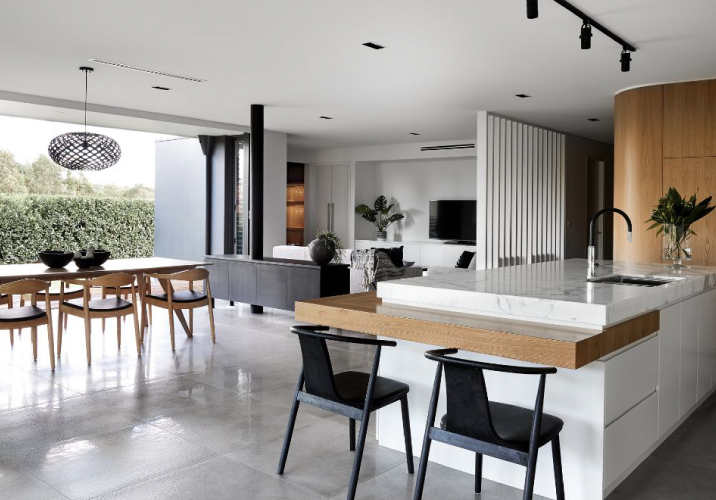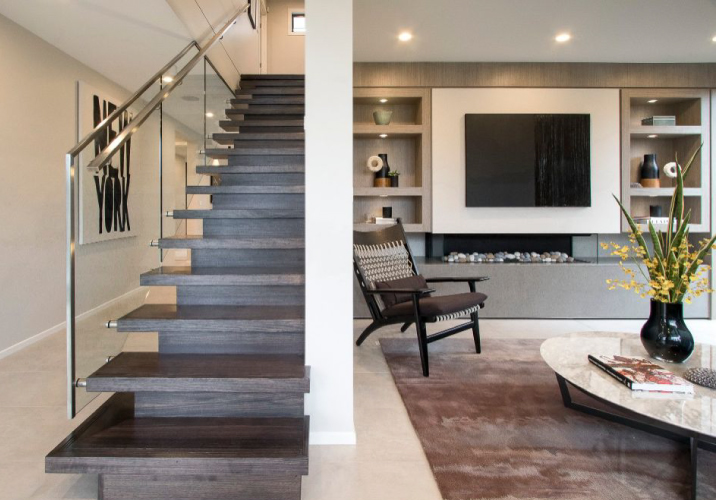
Find a local home renovator
- Inspiration /
- Indoor projects /
- Building & renovations /
- Setting a home...
Setting a home renovation budget
How to get the look without breaking the bank
Renovations are great for a change of scenery, update old facilities and most importantly, provide an increase in the value of your home. That value, however, can be severely diminished if you end up spending more than your finances can handle.
With that in mind we’ve put together a guide on how to spend wisely on your next home renovation without blowing the budget.
1. Estimating value
As a rule, you should not spend any more on a single room than the value of the room as a percentage of your overall house value. To do this, you will of course, first need to get an estimate of your home’s value.
For instance, if your home’s overall value is $800,000, (the median Australian house price) and you want to renovate your kitchen, which accounts for between 10-15% of your property’s value, then you should aim to spend under $120,000 – or 15% – on your renovation.

It’s also worth keeping in mind that some rooms scale to add more value than others. For instance, while the kitchen is often cited as the make or break room, it offers amongst the lowest return on investment, whereas a moderate bathroom makeover can almost double the money spent.
2. Look at loan options
If you’re borrowing money for your project, make sure you look at what deals are available and what types of loan will work for you. It might seem like common sense, but taking the time now to research your options and choosing one works for you will certainly save you money down the line.
If you’re unsure, speak to a professional who can provide you with the financial advice you need to make an informed decision.
3. Research quotes from contractors
Talking to a professional builder/contractor is the fastest and often the most accurate way to assess the total cost of a project. Start a conversation with a few trusted providers, and use their experience and understanding of the finer aspects of a renovation to accurately assess the cost of a project.
4. Follow the plan
While you’re in the middle of a renovation, it can be easy to get caught up in the excitement of a project and start thinking about other ways you can add value to your home. Always remember to take a step back and see how these changes would affect your budget and timeline. Reviewing the plan is the best way to avoid blowing your budget as even small additions to a project can carry unexpected costs.
5. Create a buffer
There are always unexpected costs lurking around the corner of any construction project, so provide yourself with a buffer of extra cash to take care of these items. It only needs to be 10% of the total cost of the renovation, however, that 10% can make all the difference in the event of accidents or other setbacks outside of your control. Rather than having to dip into your savings or borrow extra money if the builders need more time or if a window or fixture gets broken and needs replacing, using your emergency fund can save you money in the long run.

6. Consider all the costs
Keep in mind, when you get an estimate from your builder, it will typically cover only the base price of construction and materials without factoring in the price of interior finishing. In order to finish your home, you’ll have to factor in additional costs for interior fixtures such as these:
- Flooring
- Window treatments
- Lighting and fixtures
- Landscaping services
- Driveways and pathways
- Utility connections for your electricity and for appliances such as phones, computers and television
- Water, sewerage and garbage disposal costs
- Ground excavation for the build
- Cabinetry and appliances for kitchen and bathroom
- Energy-efficient additions such as added insulation, solar panels, solar-heated water systems and tanks to collect rainwater
To help control your budget, talk to your builder and find out how many of these interior fixtures are included in the estimate. If they aren’t, ask if your builder can recommend professionals who can do these jobs for you at a reasonable price.
Contact local home renovation experts
7. Keep your expectations realistic
It’s crucial to be realistic about the things you can and can’t have in your new home. For example, if you’re on a strict budget, you probably won’t be able to splurge on granite benchtops in your kitchen or bathroom. With all the luxury accessories, fixtures and materials available, it’s easy to get carried away and fall in love with everything you see, but you can quickly end up ruining your entire construction project if you don’t keep the spending in check. From the very start, you need to look at how much you’re paying for the site, and add on the base construction price. Whatever is left in your budget can be used for interior finishing, but be sure and set a budget by parceling out an appropriate amount for each area. Don’t start shopping for these goodies until you’ve set strict monetary limits on each section of your list.
The good news is that, with auctions, online auction sites and clearance sales, you can still get luxury items well within your budget. Just use your bargaining skills to locate great deals, and keep your eye open for discontinued stock.
How much will your job cost?
The Oneflare Cost Guide Centre is your one-stop shop to help you set your budget; from smaller tasks to larger projects.



